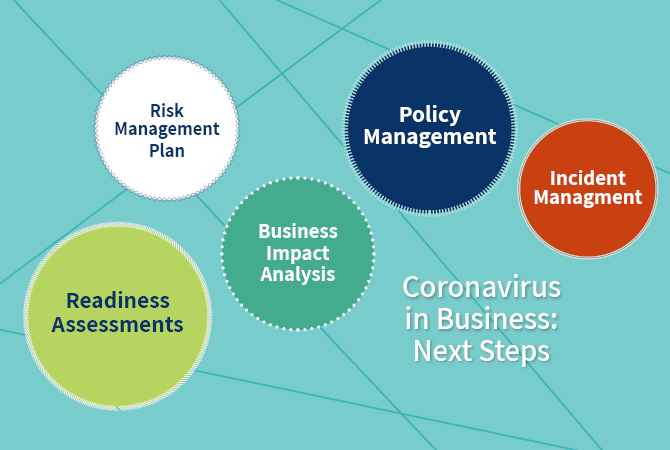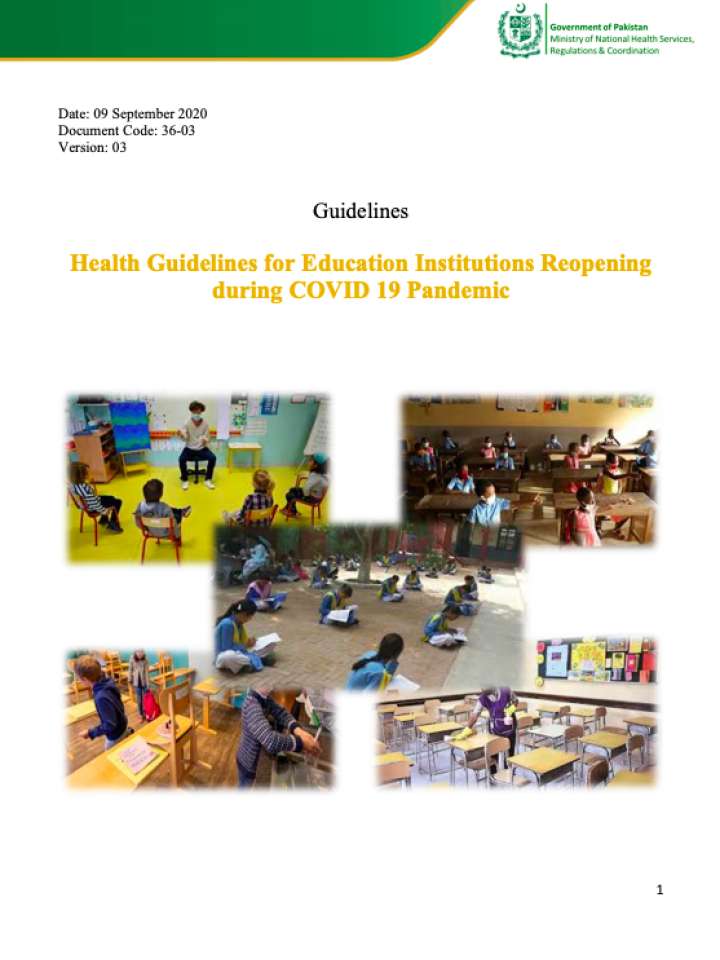Pandemic Risk Management: Strategies for Resilient Business Operations

Pandemic Risk Management: Strategies for Resilient Business Operations
The ongoing global pandemic has underscored the critical importance of effective risk management strategies for businesses. As organizations navigate unprecedented challenges, a robust pandemic risk management plan becomes indispensable.
Understanding the Pandemic Landscape
In crafting an effective pandemic risk management strategy, the first step is gaining a comprehensive understanding of the current landscape. This involves staying informed about the latest developments, monitoring health guidelines, and assessing the specific risks that the organization faces.
Implementing Safety Protocols
One of the primary components of a robust pandemic risk management plan is the implementation of stringent safety protocols. This includes measures such as regular sanitization, social distancing, and providing personal protective equipment (PPE) to employees. These actions not only safeguard the workforce but also contribute to the overall resilience of the business.
Prioritizing Employee Health and Well-being
A key aspect of pandemic risk management is prioritizing the health and well-being of employees. This involves not only physical health but also addressing mental health challenges that may arise during these challenging times. Offering support services and fostering a culture of open communication can significantly contribute to employee well-being.
Developing Emergency Response Plans
To effectively manage pandemic-related risks, organizations must have well-defined emergency response plans in place. These plans should outline specific steps to be taken in the event of an outbreak within the workforce or the community, ensuring a swift and coordinated response.
Implementing Remote Work Solutions
The rise of remote work has become a pivotal element in pandemic risk management. Establishing reliable remote work solutions allows business operations to continue seamlessly while minimizing the risk of virus transmission among employees.
Ensuring Compliance with Health Guidelines
Adherence to health guidelines and regulations is non-negotiable in pandemic risk management. Organizations must stay vigilant and adapt their policies and practices in accordance with evolving guidelines to maintain a safe and compliant work environment.
Collaborating with Health Authorities
Building strong partnerships with health authorities and experts is crucial. Regular consultations with relevant health agencies can provide valuable insights and ensure that the organization’s risk management strategies align with the latest scientific and medical recommendations.
Investing in Training and Awareness Programs
Education is a powerful tool in pandemic risk management. Investing in training programs that educate employees about health protocols, safety measures, and the importance of adherence can significantly enhance the effectiveness of risk management efforts.
Monitoring and Adjusting Strategies
Pandemic risk management is an ongoing process that requires continuous monitoring and adjustment. Regularly assessing the effectiveness of implemented strategies, gathering feedback from employees, and staying abreast of emerging developments are essential for refining and improving the overall approach.
In conclusion, navigating the complexities of a pandemic requires a multifaceted and adaptive approach to risk management. By prioritizing employee well-being, implementing safety measures, and staying informed, organizations can build resilience and ensure the continuity of their operations in the face of unprecedented challenges.
For further insights into effective pandemic risk management, visit The Healthy Consumer website. Stay informed, stay safe.
Navigating Pandemic Challenges: Essential Health Guidelines

Navigating Pandemic Challenges: Essential Health Guidelines
The ongoing global pandemic has reshaped our daily lives, emphasizing the critical importance of adhering to health guidelines to safeguard our well-being. This article explores the essential health guidelines during the pandemic, providing insights on how individuals and communities can navigate these challenging times.
Understanding the Basics:
The foundation of effective pandemic management lies in understanding the basics of health guidelines. This section delves into the fundamental principles, including the importance of wearing masks, practicing hand hygiene, and maintaining physical distancing. Clear and concise information on these basics serves as the building blocks for effective pandemic response.
Health Guidelines Pandemic: A Comprehensive Guide
For a comprehensive guide on health guidelines during the pandemic, visit Health Guidelines Pandemic for valuable insights and resources.
Vaccination Prioritization and Information:
As vaccination efforts become a focal point in pandemic control, it’s crucial to understand vaccination prioritization and stay informed. This includes knowing when and where to get vaccinated, understanding the vaccine rollout plan, and staying updated on eligibility criteria. Vaccination is a key component in achieving herd immunity and reducing the overall impact of the virus.
Mental Health and Well-being:
Health guidelines extend beyond physical well-being to encompass mental health considerations. This section emphasizes the importance of prioritizing mental health during the pandemic. Strategies for coping with stress, maintaining social connections, and seeking professional support contribute to a holistic approach to well-being.
Travel and Movement Restrictions:
Travel and movement restrictions are integral aspects of pandemic health guidelines. Understanding the current travel landscape, adhering to quarantine requirements, and staying informed about regional restrictions contribute to collective efforts in minimizing the spread of the virus. This section provides insights into responsible travel practices during the pandemic.
Monitoring Symptoms and Testing:
Vigilant monitoring of symptoms and regular testing are pivotal in pandemic management. Individuals are encouraged to be aware of common symptoms, seek testing when necessary, and follow guidelines for quarantine and isolation. This proactive approach aids in the early detection and containment of the virus.
Remote Work and Digital Health Tools:
Adapting to remote work has become a widespread practice during the pandemic. This section explores the health guidelines related to remote work and the use of digital health tools. From setting up ergonomic home offices to utilizing telemedicine services, these guidelines contribute to a healthy and productive work environment.
Community Engagement and Support:
Communities play a crucial role in adhering to health guidelines. This involves fostering a sense of collective responsibility, supporting vulnerable populations, and engaging in community initiatives. A united effort within communities enhances the overall effectiveness of health guidelines and contributes to the well-being of all.
Educational Outreach and Communication:
Effective communication and educational outreach are essential components of health guidelines dissemination. This section emphasizes the role of clear and accessible information in promoting guideline adherence. Educational campaigns, community workshops, and transparent communication from health authorities contribute to an informed and empowered public.
Adaptability and Responsiveness:
As the pandemic evolves, health guidelines must adapt accordingly. This final section highlights the importance of adaptability and responsiveness in the face of changing circumstances. Staying informed about updates to guidelines, being flexible in response to new information, and adjusting behaviors contribute to a collective and dynamic pandemic response.
Conclusion:
In navigating pandemic challenges, adherence to health guidelines is paramount. From understanding the basics to vaccination prioritization, mental health considerations, travel restrictions, symptom monitoring, remote work practices, community engagement, educational outreach, and adaptability, each aspect plays a crucial role. By following these essential health guidelines, individuals and communities can contribute to a united and effective response to the ongoing global pandemic.
Navigating Safe Travels Amid the Pandemic Challenges
![]()
Navigating Safe Travels Amid the Pandemic Challenges
The ongoing global pandemic has reshaped the way we approach travel. With uncertainties and health concerns, ensuring travel safety has become a top priority for individuals venturing beyond their homes. Explore key strategies and considerations to navigate safe travels in these challenging times.
Understanding the Current Travel Landscape:
Before embarking on any journey, it’s crucial to stay informed about the current travel landscape. Keep track of travel restrictions, quarantine requirements, and health guidelines both at your departure and destination locations. Government advisories and official health websites provide up-to-date information to help you make informed decisions.
Choosing Safe Modes of Transportation:
The mode of transportation plays a significant role in travel safety. Opt for modes that allow for social distancing and adhere to health protocols. While air travel remains a viable option with enhanced safety measures, consider alternative methods such as private car travel or train journeys, depending on your destination and preferences.
Prioritizing Accommodation Safety:
Selecting safe and reputable accommodations is essential for a secure travel experience. Look for hotels or rental properties that follow rigorous cleanliness and hygiene standards. Many establishments have implemented enhanced cleaning protocols to ensure the safety of guests, making this a crucial factor in your travel planning.
Personal Health and Hygiene Practices:
Maintaining personal health and hygiene practices is paramount during travel. Carry an ample supply of hand sanitizers, disinfectant wipes, and personal protective equipment. Regularly wash hands, avoid touching your face, and practice respiratory etiquette. These simple yet effective measures contribute significantly to minimizing the risk of exposure.
Travel Safety During Pandemic: A Comprehensive Guide
For a more detailed guide on ensuring travel safety during the pandemic, visit Travel Safety During Pandemic to access valuable resources and insights.
Flexible Planning and Booking:
Uncertainties in the current climate necessitate flexible planning. Choose accommodations and transportation options that offer flexible booking and cancellation policies. This provides you with the agility to adjust your plans if unexpected changes in the pandemic situation or personal circumstances arise.
Local Regulations and Cultural Sensitivity:
Every destination may have its own set of regulations and cultural norms regarding the pandemic. Familiarize yourself with local guidelines, quarantine requirements, and any specific health-related protocols. Respect and adhere to these regulations, showcasing cultural sensitivity and contributing to the safety of both locals and fellow travelers.
Emergency Preparedness:
While no one plans for emergencies, being prepared is crucial. Carry a basic first aid kit, necessary medications, and contact information for local healthcare facilities. Familiarize yourself with emergency procedures at your destination. Being well-prepared adds an extra layer of security and ensures a prompt response in case of unexpected situations.
Constant Monitoring and Adaptability:
Travel safety during the pandemic requires constant monitoring and adaptability. Stay informed about the evolving situation, both globally and at your destination. Be prepared to adjust your plans, whether it’s choosing alternative routes, changing accommodations, or even postponing your trip based on the current circumstances.
Conclusion:
Safe travels during the pandemic involve a combination of proactive planning, adherence to health guidelines, and flexibility in response to changing situations. By staying informed, prioritizing personal and public health, and being adaptable, you can navigate the challenges and enjoy travel experiences with an added layer of safety and confidence.





